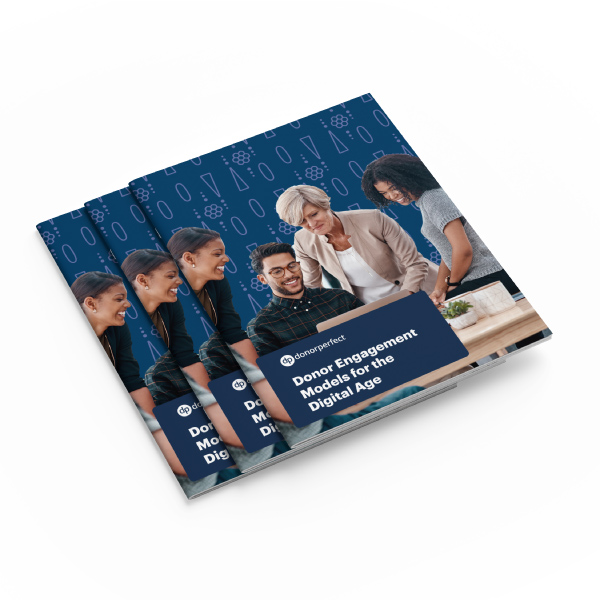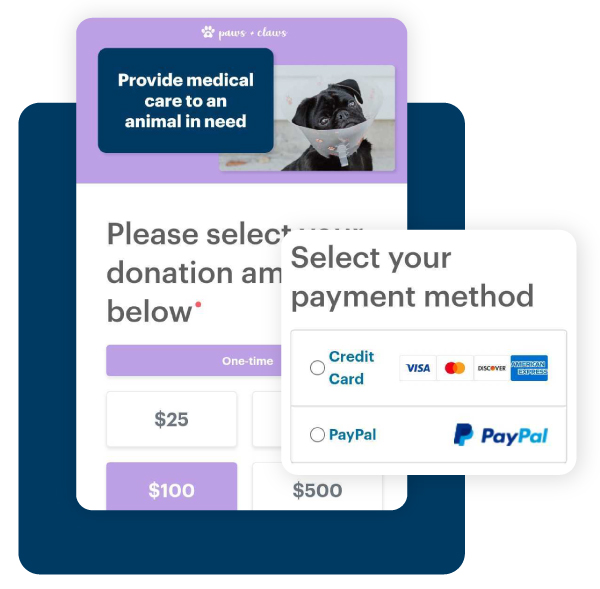Nonprofit Technology & Fundraising Blog
Subscribe to our mailing list

October 2, 2025 | DonorPerfect Conference, Nonprofit Trends
Building lasting, meaningful connections with donors takes time and patience. Luckily, learning strategies and best practices for developing those connections doesn’t have to! This year’s DonorPerfect Conference included a series of micro-talks by experts from across the nonprofit sector, who offered focused tips for leveraging digital tools to spark connection, deepen engagement, and drive impact.
From wordsmithing the perfect donor email to staying true to your mission in the age of AI, these rapid-fire sessions remind us why human communication and authenticity are the heart of effective fundraising—even, or maybe especially, when mediated by technology.
The digital age hasn’t only changed the way nonprofits fundraise; it has also changed how donors approach charitable giving. More than ever, donors seek deep connections with the organizations they support beyond the dollar value of their monetary contributions.
Donor Engagement Models for the Digital Age reimagines traditional, transaction-based fundraising models to build donor relationships that last. Download your free guide and learn authentic strategies for keeping your donors engaged at every stage of the donor journey.

Looking to get caught up to speed? Read on for the key takeaways from these rapid sessions.
At any stage of a donor’s relationship with your nonprofit, the key to building and sustaining connection is clear, consistent communication. But there is no one-size-fits-all approach to communicating, for your donors or for your organization. The words you choose and how you convey them can make the difference between a one-off gift or a long-term commitment.
In this first pair of micro-sessions, experts Vanessa Chase Lockshin and Dana Snyder walked us through simple shifts in messaging that spark immediate excitement and inspire lasting engagement with your cause. Together, these talks were a reminder that effective fundraising communication doesn’t have to be complicated: even small changes can have a big impact.
Your supporters’ attention is precious. If your fundraising emails aren’t getting the engagement (or donations) your cause deserves, it’s probably because they don’t hook the reader at the outset. As Vanessa Chase Lockshin explains, the very first sentence of an email determines whether someone will continue reading or lose interest.
“Attention is everything.”
– Vanessa Chase Lockshin

The key to a solid hook? A balance of directness and authenticity. Vanessa offers a few quick tips for writing an attention-grabbing opener:
Watch Vanessa’s session to learn more about writing emails that stick, including some tried-and-true phrases and quick copyediting in action.
For many nonprofits, monthly giving may feel like the white whale of their fundraising program: desperately pursued, but always just out of reach. Why is monthly giving so elusive?
According to Dana Snyder, the reason is simple—we’re just not asking for it. As Dana explains in her micro-session, only 2% of all new donors in the United States give on a recurring basis. But with a few small tweaks to their own habits of mind and communication, nonprofit fundraisers can transform monthly giving from a checkbox on their donation forms to a can’t-miss opportunity for sustained impact.
How can you spark a recurring-first mindset? We’ve summarized Dana’s quick tips below.
Donors won’t change their giving habits unless fundraisers change how they make the ask. Many people already pay monthly subscription fees for things like streaming services, magazines, or gym memberships. Why not promote charitable giving as a subscription to sustained impact? When you frame recurring giving as the primary way to support your mission, rather than simply one option, donors will be more likely to give monthly—and to contribute more in the long run.
If recurring giving is an afterthought in your fundraising communications, it will be an afterthought for donors. Prominently promote monthly giving on your website, direct mail appeals, and online giving forms. Create a unique name for your monthly giving program to promote brand awareness and a sense of community among supporters, and design a designated landing page and donation form that illustrate sustained impact and call on donors to join.
Pro tip: Promote your monthly giving program with its own dedicated donation form.
With DonorPerfect Online Forms, you can design branded, easy-to-navigate forms that make giving a breeze and streamline the fundraising process. Set default monthly gift amounts, automate thank-yous and acknowledgements, and sync donor data directly to your fundraising CRM.

Make some simple adjustments to your language to reframe asks for one-time donations as appeals for monthly giving. Rather than illustrate the impact of one gift, tell donors what a recurring dollar amount could do for your organization every month. Dana offers these three guidelines:
Dana’s template: “With [$X] per month, you’ll [specific impact] every [timeframe], helping [who it helps] experience [sustained change].”

Watch Dana’s session and discover simple tactics to inspire a recurring-first mindset—within your organization and among your donors.
As AI tools become increasingly common in the nonprofit sector, many teams find themselves asking the same question: how can we integrate tech without losing the essential human element of our work?
In this second set of talks, Meena Das and Tim Lockie offer thoughtful strategies for approaching AI with intention, confidence, and purpose. When implemented with clear governance and a careful assessment of the benefits and risks, AI tools can actually enhance the authentic connections we build with our donors.
With overwork and burnout so common in the nonprofit sector, the right AI tools can help fundraisers streamline processes, reduce workload, and spend more time focusing on donors. But AI comes with risks as well as benefits, and without proper governance and evaluation, organizations are liable to create more problems than they solve.
“Without AI evaluation, the risk isn’t just inefficiency—it’s broken trust, missed equity goals, invisible labor burdens, and most importantly, mission drift.”
– Meena Das

According to nonprofit tech expert Meena Das, responsible integration of any AI tool into your nonprofit fundraising must include a rigorous assessment plan before, during, and after the implementation process. Careful oversight and continuous evaluation can help organizations monitor usability, staff workload, and alignment with mission goals. Most importantly, proper governance is critical to ensuring your AI systems aren’t upholding inequities or creating new ones—in your workplace and the communities you serve.
Meena offers a 4-step recipe for implementing an effective AI evaluation plan:
For an evaluation plan to be effective and equitable, it should be designed with input from a variety of stakeholders. Meena includes front-line fundraisers, CRM managers, community representatives, and DEI leads. She also suggests including the tech vendor that is selling you the product.
Determine the metrics you’ll use to evaluate your AI tool. These could include accuracy, equity, efficiency, transparency, and mission impact as examples. Together, create a specific data collection plan and define what success should look like for each metric.
Train staff to collect specific data throughout the implementation period. Surveys, data audits, and staff work logs can offer insights into how individuals interact with and perceive AI; any changes to workflow or efficiency; and impact on donor behavior and generosity.
After the implementation period, hold a meeting to go over key findings and reflect on any unintended consequences. With input from all stakeholders, decide your course of action: will you permanently integrate the AI product into your work? Do any changes need to be made? Or is it best to put AI aside, at least for the time being?
Finally, Meena emphasizes that this evaluation process must be designed through an equity-driven framework with five key principles:
With these ingredients and a dash of intention, you can align your fundraising strategy with your mission to deepen authentic connection and grow impact. Watch Meena’s talk to learn more.
Change can be scary. Rapid advances in technology—and shifts in our day-to-day work that come with them—may have some feeling overwhelmed, or even powerless.
In his rapid talk, Tim Lockie addresses these concerns and makes a case for why and how nonprofits should embrace AI tools with confidence. Rather than view agentive AI as a threat to our agency and capacity for human connection, Tim urges us to adopt a pragmatic mindset that recognizes what we can change, what we cannot, and how humans and AI interact within a dynamic framework.
To explain this dynamic, Tim offers the analogy of a trampoline:
Tim places special emphasis on the mat—our human agency—as where we should shift our focus when talking about AI. By approaching AI with courage, wisdom, and acceptance, we can do the most good with the tools that we use.
Whether you’re refining your email strategy, promoting recurring giving, or navigating AI adoption, this year’s quick sessions demonstrate how small shifts in your approach can lead to major growth in your fundraising, and build authentic connections in the process.
Want to go deeper? DonorPerfect has the tools you need to boost monthly giving, streamline communication, and make smarter decisions with real-time reports—all in one place. Download your free guide to AI for Nonprofits to explore how technology and your mission can work hand in hand.
Follow us on social!